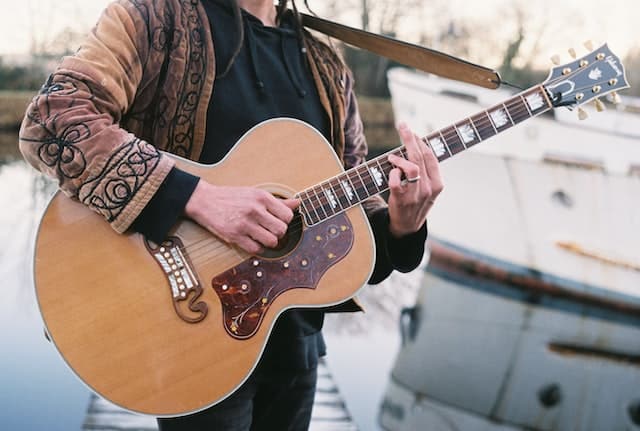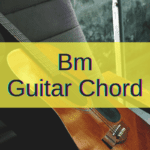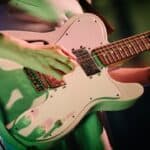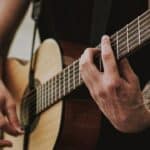The first thing we learn when we pick up a guitar for the first time and start taking lessons is open chords. These are fun shapes that take some time to master but help us play a plethora of songs we love.
All of the sudden, our instrument opens up and blossoms in a musical spring.
Yes, it is all fun and games until we are faced with the first barre chord: F Major.
Our cool teacher will save the day by giving us several options to play that infamous chord in different ways. Yet, if that teacher is really cool, he or she will encourage us to not give up.
Barre chords are much more than the F major; they are a way of unlocking the fretboard.
Barre chords are necessary as a stage in your evolution as a guitar player. Firstly, they help you unlock the fretboard and play most songs in Western music. Secondly, they will strengthen the muscles in your fretting hand. Finally, they are an easy way of transposing any song to a different key.
Let me take you on a journey to understanding these chords better. On our way there, we’ll stop to answer all the questions you’ve always had about them but never dare to ask.
Buckle up because here we go!
Why Some Chords are Played with a Barre?
To explain the existence of barre chords, we should first start talking about chords.
What is a chord?
A chord is very simply a combination of notes. Yes, to form chords all you need to do is combine the right notes together.
When we talk about major and minor chords, for example, we talk about triads. A triad is a combination of 3 notes.
So, for example, if we were to talk about C major, we would talk about the notes C – G –E.
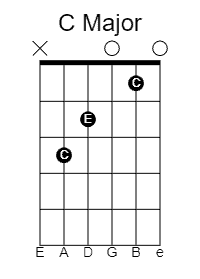
This is what we know as an open chord. As long as we can find and play the triad this way, we can play any chord in the open position.
The G that seems to be missing from the diagram is the open third string.
But what happens with the F major chord that requires a barre chord? Well, the reason is that the triad for F major is F – A – C.
If we were to play just the notes, it will give us a shape that looks like this:

The reason why this version of F Major can’t be considered an open chord is that none of the open strings (D, B, and E) are part of the chord’s triad.
This makes it difficult to play because we need to mute some strings, which will make it sound smaller than all the other open chords.
Yet, if we extend our index finger throughout the first fret, we find out that all the notes now belong to the chord.
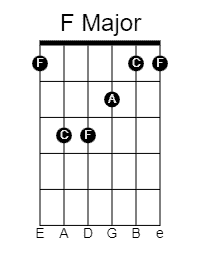
With this shape, you can play the F major chord with the same volume and power as an open chord (or the closest possible).
Are Barre Chords Really Necessary for Playing Guitar?
The answer is no, but they are really handy. You might be thinking “Handy? But I can’t play them!”
Well, although you can always find a way around them, there are many benefits to your playing once you’ve mastered barre chords.
Let’s see my favorite three (there are plenty more):
One Shape, All the Chords
This is, to me at least, the most prominent benefit of learning barre chords: learning a single shape, you can play chords anywhere on the fretboard.
Yes, this is a quality of barre chords: as long as you repeat the same shape and know what the root note of the chord you’re playing is, you can play any chord you like.
Moreover, if you want to play any major, minor, seventh, and minor seventh chords you can just learn four shapes and play them.
For example:
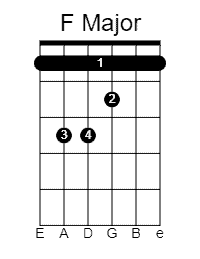
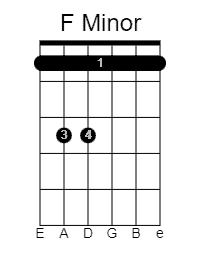
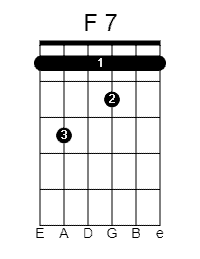
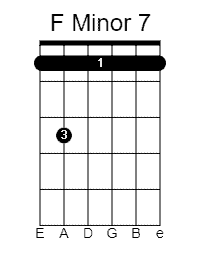
If you know all these shapes and just move them around the fretboard, you can get different chords depending on the note you’re fretting on your 6th string.
For example:
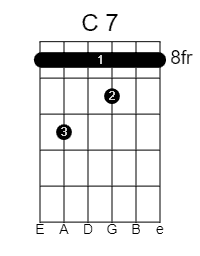

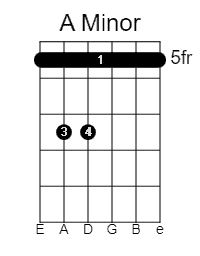
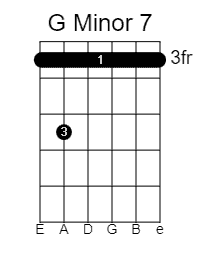
Play Sharp Chords Easily
As you might know, not all scales are like the C scale. Indeed, most of them aren’t like the C scale and have sharp notes. How do we play sharp notes with open chords?
Well, one way is to use a capo to move the notes half-a-tone up. But then, playing the original open chords would be very difficult.
So, with barre chords, you can play any chord in its sharp version easily. For example, if we go back to our F chord, next to its sharp version will look something like this:

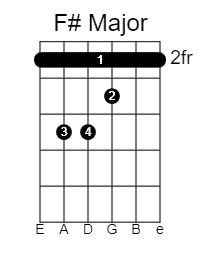
As you can see, barre chords work as a human capo you can move around the fretboard to create any chord you want.
Easy Key Transposition
Finally, another great asset of barre chords is that they will allow you to play any song in any key even if you don’t have a capo.
But, hey, why is it important to play a song in a different key anyways?
Well, for example, if you are a singer or play with a singer, you’ll know that we, guitar players, can play through the entire neck while singers can’t sing outside their natural range.
Therefore, if you’re, for example, backing up a female singer trying to play Johnny Cash tunes, you’ll have to play them where she can sing them.
Using barre chords, you can just move all the chords up to the key she feels comfortable with and kill it night after night. That way, the whole nightmare of forgetting your capo the night of the big event will dissipate from your mind in a nanosecond.
Are There Any Ways of Avoiding Barre Chords?
Yes, there are many ways of avoiding barre chords. As we said at the beginning, as long as you can play the triad that makes the chord (or triad plus one in seventh chords), you can play any chord you like.
Nevertheless, I strongly recommend you practice until you master them so you can take advantage of all the benefits named above.
In the meantime, here are my two shortcuts to playing barre chords without fully mastering them.
Power Chords for Major and Minor Chords
Power chords, also known as fifths, aren’t, by definition, major or minor. This is because instead of being made of a notes triad, you only need two to form them: the root and the 5th.
That being said, they share one important aspect with barre chords: the root note defines the chord while the shape stays the same.
Hence, as long as you maintain the same shape, you can move it around the fretboard and play any chord you need.
On the other hand, you can’t replace anything but minor and major chords with them.
This is what the power chords and the barre chords alternatives look like for G major and B minor:

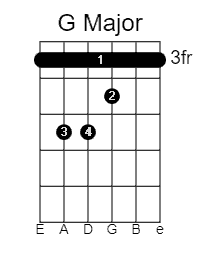
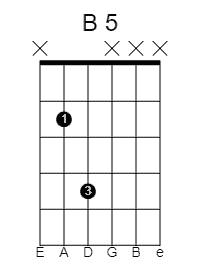
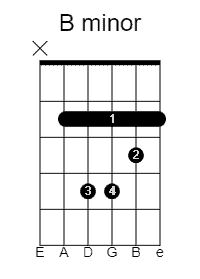
Block Chords for Seventh and Minor Seventh Chords
What happens when we want to create new shapes like seventh chords for example? Well, at that point we can no longer do it with fifths or power chords.
So, for that, we’ll use something that is known as a block chord in the jazz music realm.
Wait! I know what you think, but don’t freak out. Although the word “jazz” is part of the equation, they are easier to play than barre chords.
All you have to do is form the shape of a traditional D7 open chord and change the root note you’re playing on your 4th string (your D string).
Then, moving that same shape around the fretboard you can create whatever the seventh chord you need including sharps.
For example, an F7 looks like this:
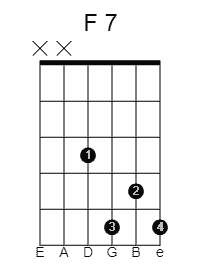
To go from a seventh chord to a minor seventh chord using this shape, you only have to move one finger. In the same example, it looks like this:
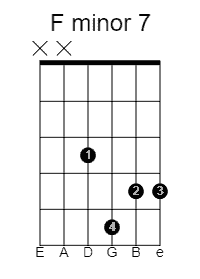
Do Barre Chords Get Easier With Time?
This is the quintessential question all my guitar students ask me with a sore fretting hand and on the verge of tears.
My answer is always yes.
Not only because I’m a really cool guitar teacher always trying to encourage them, but also because it’s true.
Yes, I strongly believe that ALL skills can be mastered on the guitar as long as you practice hard enough.
I know that some skills might prove to be more difficult than others, but in the end, with the right guidance and a ton of effort, you can play whatever you want.
Plus, the more you play guitar, the more you’ll strengthen the muscles in your hands and the more capable you’ll be.
In other words, even if you’re not practicing barre chords specifically, you’ll still be getting closer to playing them effortlessly.
How Long Does it Take to Master Barre Chords?
I don’t recommend you think of guitar learning in a matter of time; each player’s journey is different.
Yes, you might have started to play guitar years ago and still not mastered them, or be at it for months and play them naturally.
Likewise, you might struggle with scales while the guitar player next door might be soloing the night away in a matter of months.
The important thing is always not to give up when you’re learning to play new stuff on the guitar.
That’s right, abandoning the process is the only way to ensure that you don’t master any skills.
So, make it your goal, practice it daily and, before you know it, you’ll be playing barre chords like a boss.
The Bottom Line: Can you Skip Barre Chords as a Beginner and Learn Them Later?
This is what this article is all about and is also something most of us guitar players do, so the answer is YES.
When I began writing this article, I remembered very clearly trying to play F major and B minor on my cheap nylon-string guitar and cursing the entire world because I was such a failure.
Luckily, I had a terrific guitar teacher when I was 10 years old that taught me how to find my way around most techniques until mastering them.
She also taught me the importance of practicing new skills until I could play them decently and never give up.
She would record me and show me versions of myself as I was getting better. She did that in an old Tascam Portastudio with chrome-tape cassettes.
I can still remember how paralyzed I felt every time I heard the noise of the machine recording.
So, yes, you can skip them at the beginning and play them once you’ve mastered them.
Just please, promise me and promise yourself something: You won’t give up on them until they come out naturally.
Happy playing!

Hello there, my name is Ramiro and I’ve been playing guitar for almost 20 years. I’m obsessed with everything gear-related and I thought it might be worth sharing it. From guitars, pedals, amps, and synths to studio gear and production tips, I hope you find what I post here useful, and I’ll try my best to keep it entertaining also.

